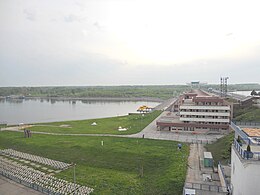Term: Power station
**History of Power Stations:**
– Zénobe Gramme invented a powerful generator in 1871.
– Lord Armstrong built a hydroelectric power station in England in 1878.
– The world’s first public coal-fired power station opened in London in 1882.
– Pearl Street Station in New York provided electric lighting in 1882.
– AC systems improved efficiency and led to AC distribution dominance over DC.
**Types and Classification of Power Stations:**
– Thermal power stations use heat engines for power generation.
– Classification by heat source: fossil fuels, nuclear, geothermal.
– Fossil fuel power stations use steam or combustion turbines.
– Nuclear power plants generate electricity from nuclear fission.
– Geothermal power plants extract steam from underground rocks.
**Electricity Generation Statistics (2021):**
– Total global electricity generation: 28 petawatt-hours.
– Coal contributed 36% to global electricity generation.
– Natural gas accounted for 23% of electricity.
– Hydroelectric power made up 15% of total electricity generated.
– Nuclear power accounted for 10% of the world’s electricity production.
**Future Developments and Energy Sources:**
– Advancements in power station technology for efficiency and reliability.
– Increased use of combined cycle plants for enhanced efficiency.
– Growth of renewable energy sources like wind and solar.
– Global efforts to reduce carbon emissions in power generation.
– Research on energy storage solutions for sustainability.
**Renewable Energy Sources and Technologies:**
– Solar energy: photovoltaic and thermal power plants.
– Wind energy: turbines for electricity generation.
– Marine energy: wave and tidal power from ocean movements.
– Osmotic power: salinity gradient energy for electricity.
– Biomass energy: combustion and processing for electricity generation.
A power station, also referred to as a power plant and sometimes generating station or generating plant, is an industrial facility for the generation of electric power. Power stations are generally connected to an electrical grid.



Many power stations contain one or more generators, rotating machine that converts mechanical power into three-phase electric power. The relative motion between a magnetic field and a conductor creates an electric current.
The energy source harnessed to turn the generator varies widely. Most power stations in the world burn fossil fuels such as coal, oil, and natural gas to generate electricity. Low-carbon power sources include nuclear power, and use of renewables such as solar, wind, geothermal, and hydroelectric.
